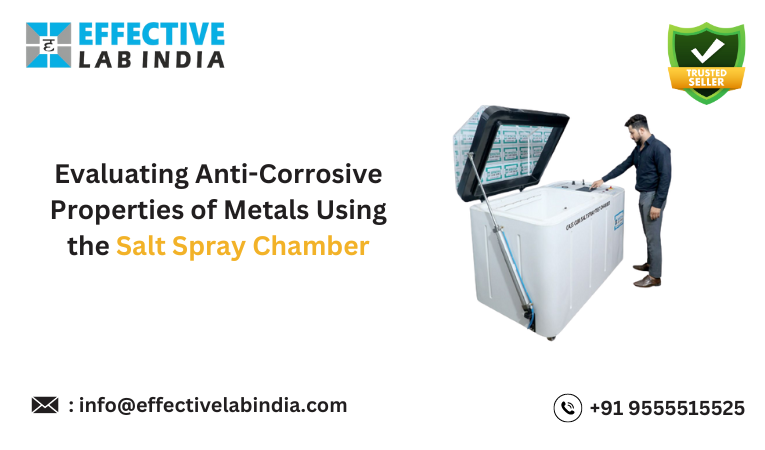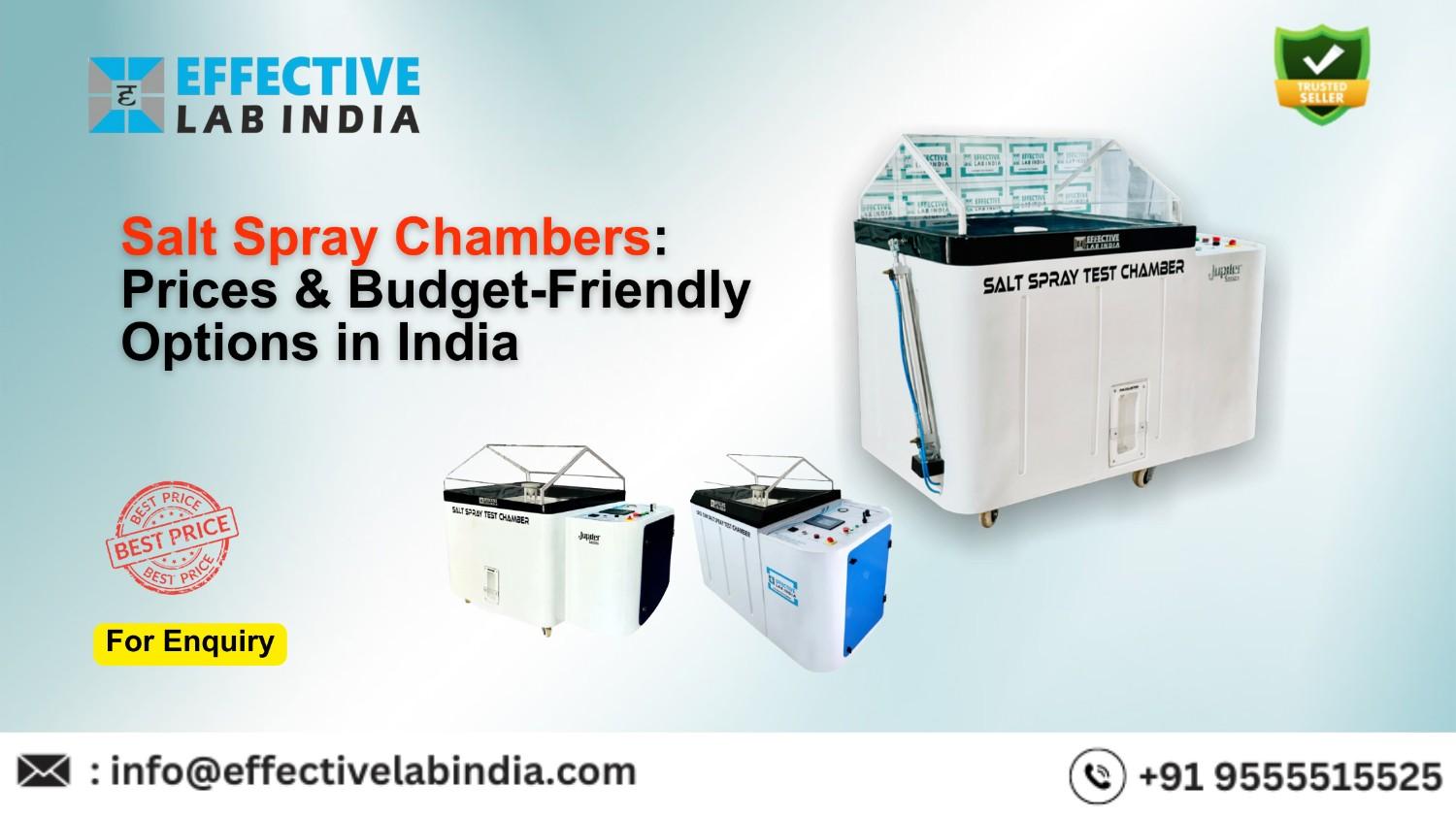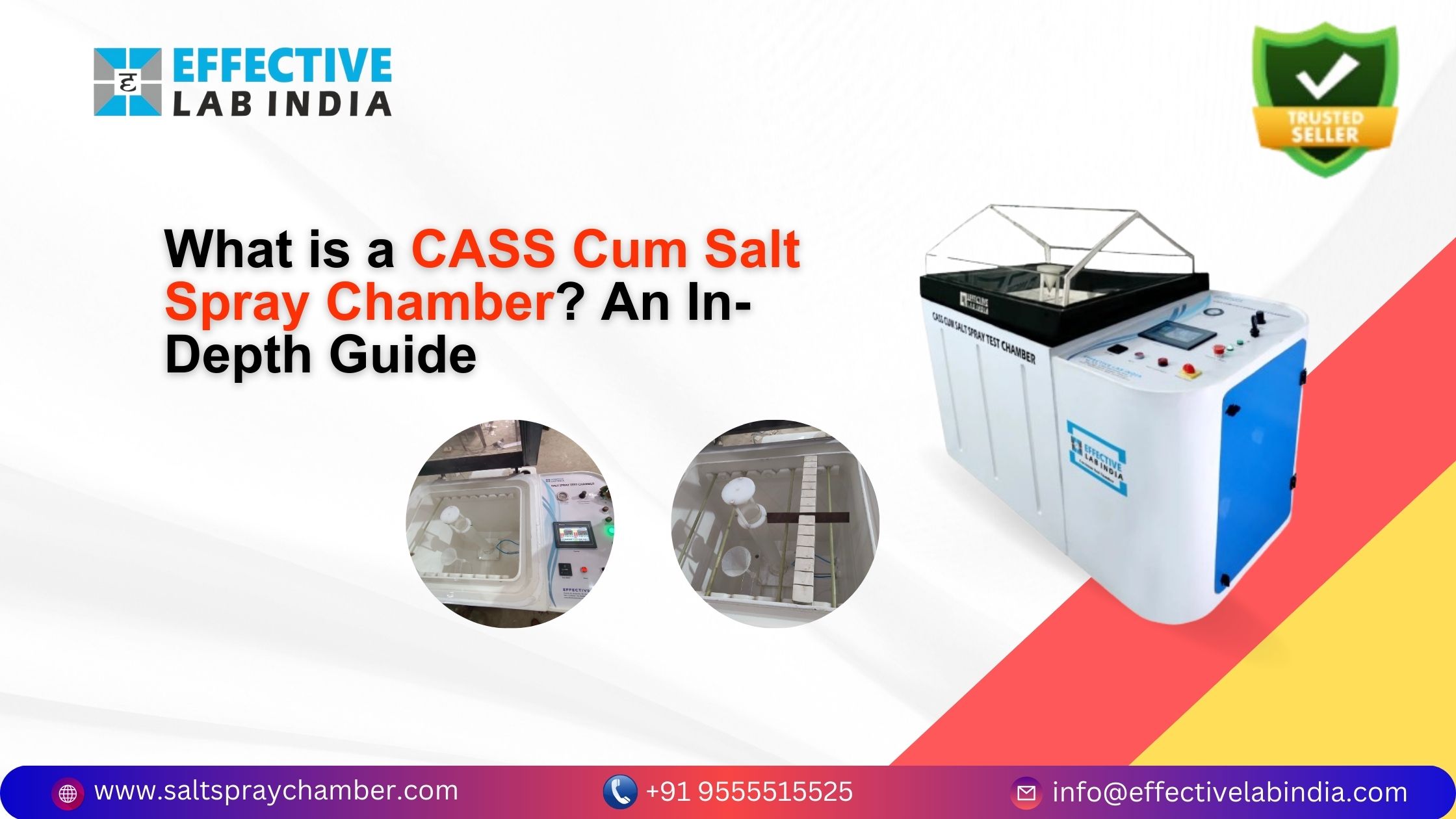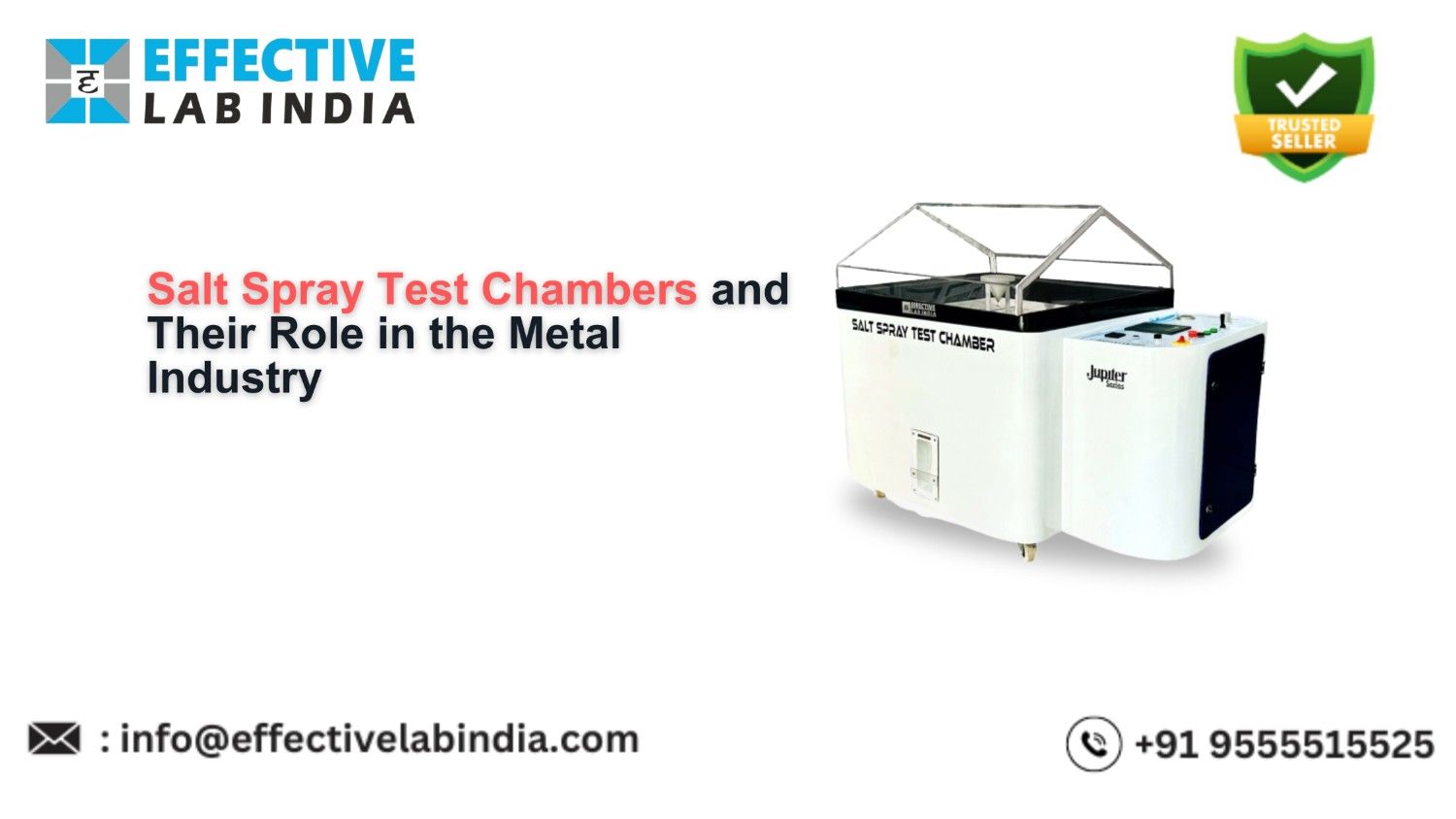Evaluating Anti-Corrosive Properties of Metals Using the Salt Spray Chamber

In many sectors, corrosion is a big problem, especially when it comes to metals that are exposed to harsh conditions. It is essential to understand and improve the anti-corrosive qualities of metal components in order to guarantee their durability and dependability. Using a salt spray chamber is one of the best ways to assess these qualities. This article examines how salt spray chambers may be used to assess the anti-corrosive qualities of metals.
Knowing About Corrosion
The natural deterioration of metals caused by interactions with air, moisture, and salts in the environment is called corrosion. As a result of this process, oxides and other compounds are formed, weakening the metal and impairing its functioning and structural integrity. Typical forms of corrosion consist of:
Uniform Corrosion: Even surface deterioration due to uniform corrosion.
Pitting Corrosion: Small holes are caused by a localised assault known as pitting corrosion.
Crack Corrosion: Takes place in small areas.
Galvanic Corrosion: When two different metals come into electrical contact, corrosion known as galvanic corrosion occurs.
The Importance of Anti-Corrosive Properties
Strong anti-corrosive metals are vital in a wide range of industries, including the automotive, aerospace, marine, and construction sectors. Improving these characteristics can save maintenance costs, stop catastrophic failures, and greatly increase the lifespan of metal components.
Techniques to Boost Anti-Corrosive Characteristics
Metals can be made more resistant to corrosion by using a variety of techniques, such as:
Alloying: To increase resistance, alloying involves adding materials like molybdenum, nickel, and chromium.
Coatings: Using layers of protection like paint, anodizing, or galvanising (a zinc coating).
Inhibitors: Chemicals that inhibit corrosion are used as inhibitors.
Design Modifications: Making changes to designs to reduce regions susceptible to corrosion.
Conducting the Salt Spray Test Over Variable Metal Types
One commonly used technique to evaluate the corrosion resistance of various metals is the salt spray test. This test offers important insights into the corrosive properties of different metals by subjecting metal samples to a saline mist in a controlled setting. The procedure for applying salt spray to various metal kinds is described in this article, along with the importance of the findings.
Overview of the Salt Spray Test
Purpose of the Test
The salt spray test, also known as the salt fog test, simulates the corrosive effects of marine and coastal environments on metals. It is particularly useful for:
- Quality Assurance: Ensuring that metal products meet corrosion resistance standards.
- Comparative Analysis: Evaluating the performance of different metals and coatings.
- Research and Development: Testing new materials and protective coatings.
Test Environment
A continual fine mist of a 5% sodium chloride (NaCl) solution at a regulated temperature, usually approximately 35°C (95°F), makes up the test environment in a salt spray test chamber. The corrosion process is sped up in this atmosphere, making it possible to assess the metal’s performance quickly.
Preparing for the Salt Spray Test
Selecting Metal Samples
A variety of metal types can be tested, including but not limited to:
- Carbon Steel: Known for its strength but susceptible to corrosion.
- Stainless Steel: Includes grades like 304 and 316, known for their corrosion resistance.
- Aluminium Alloys: Naturally corrosion-resistant due to an oxide layer.
- Copper Alloys: Includes brass and bronze, with good resistance in marine environments.
- Galvanized Metals: Coated with zinc for added protection against corrosion.
Sample Preparation
- Cleaning: Samples must be free from contaminants, oil, and grease.
- Labelling: Each sample should be labelled for identification.
- Coating (if applicable): If testing coated metals, ensure the coating is uniformly applied.
Conducting the Salt Spray Test
Setting Up the Chamber
- Solution Preparation: Mix the salt solution to the required concentration (typically 5% NaCl).
- Chamber Calibration: Ensure the chamber temperature and spray density are set according to the test standards.
Placing the Samples
- Orientation: Position the samples at an angle (usually 15 to 30 degrees) to allow even exposure to the spray.
- Spacing: Ensure adequate space between samples to avoid cross-contamination.
Test Duration
Depending on the kind of metal and the regulations being adhered to, the test’s duration may change. Typical times vary from 24 to more than 1000 hours, based on the material’s anticipated ability to withstand corrosion.
Monitoring and Inspection
- Regular Checks: Periodically check the chamber’s solution level and temperature.
- Intermediate Inspections: Inspect samples at regular intervals to document the progression of corrosion.
Evaluating Test Results
Visual Inspection
Examine the samples for signs of corrosion such as rust, pitting, blistering, or coating breakdown. Document the extent and nature of the corrosion.
Quantitative Measurements
- Weight Loss: Measure the weight of the samples before and after the test to calculate material loss.
- Corrosion Rate: Determine the corrosion rate based on the weight loss and exposure time.
Comparison Against Standards
Compare the results with industry standards such as ASTM B117 or ISO 9227, which provide guidelines for acceptable corrosion levels.
Interpreting Results for Different Metals
Carbon Steel
Carbon steel typically shows significant corrosion unless protected by coatings. The test results help evaluate the effectiveness of these coatings.
Stainless Steel
Grades like 304 and 316 should show minimal corrosion, demonstrating their suitability for harsh environments.
Aluminum Alloys
Expected to perform well due to their natural oxide layer. Results confirm their resistance to pitting and general corrosion.
Copper Alloys
Should exhibit good corrosion resistance, particularly in marine-like conditions, validating their use in such environments.
Galvanized Metals
The zinc coating should protect the underlying steel. The test results indicate the durability and longevity of the galvanizing.
Conclusion:
Comprehending and optimising the anti-corrosive characteristics of metals is essential to guarantee the robustness and dependability of parts employed in diverse sectors. In this effort, salt spray chamber testing is a vital resource that yields insights that propel the creation of materials with increased resistance. Through the use of sophisticated materials and testing techniques, industry can reduce the impact of corrosion, resulting in more affordable and secure solutions.
For information on salt spray chamber price details, please get in touch with us. Our team is available to answer your questions and help you choose the ideal chamber for your corrosion testing needs. Call us at +91 9555515525 or email us at info@effectivelabindia.com.




